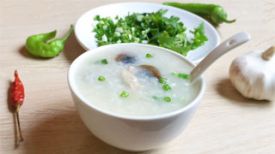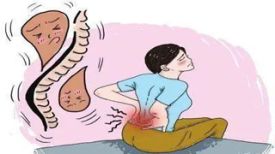
Article excerpt: "Traditional Chinese Medicine Ancient Methods for Infant and Child Health Preservation"
What is' steaming '?
'Bianzheng' is a theory used by ancient medical practitioners to explain the growth and development patterns of young infants. From birth to one year old, due to vigorous growth and development, the bones, meridians, organs, and mind of the newborn are constantly changing and gradually developing towards a healthy direction.
Simply put, steaming refers to physiological heating, change means change, and steaming means transpiration. Because children's five organs and six viscera are not fully developed and mature, they are a process of growth. Every time they change, their muscles, bones, and five viscera are allowed to develop again, which is a good phenomenon.
A mother recounted:
I used to hear from elderly people that a child would grow up a little after getting burned once. I have also observed carefully, and indeed my own child is. Because my daughter loves to have a fever, but every time she has it, she feels like she has grown a little taller or even bigger.
Another mother asked:
Having a fever once makes her grow up a bit, like my baby who is 13 months old. She hasn't had a fever before, but she usually has some colds and the like. Isn't that good?
Dr. Peng Xin replied:
Once a child has a fever, they will learn to be obedient again. Being obedient means being well behaved, which proves that the child's nervous system is developing relatively well. The meaning of being good is good, representing intelligence, and then being healthy.
Why do elderly people say 'Once a child has a fever, learn to be good'
The Sui Dynasty's Chao Yuan Fang's "On the Origin of Various Diseases and Changes in Steaming" believed that "when a child changes to steaming, it promotes the growth of blood and qi. When a child changes to steaming, it promotes qi, and when a child changes to steaming, the body becomes hot." In the Tang Dynasty's Sun Simiao's "Qian Jin Fang: On the Change of Steaming," it was said that "when a child changes to steaming, it honors their bloodline and changes their five organs. Therefore, when they change, they immediately feel a difference in mood
The reason why a child becomes steamed is to honor their bloodline and improve their five internal organs
Qian Yi of the Song Dynasty provided a more detailed explanation of Bian Zheng in his book "The Direct Formula for Preschool Medicine Diagnosis of Children: Bian Zheng": "Children generate bone qi in their mother's womb, and the five organs and six viscera are incomplete. After self generation, they have the consciousness of long bones, meridians, and the five organs and six viscera. Bian Zheng is easy to change, and when it occurs again, from the inside out, from bottom to top, the body becomes hot. Therefore, Bian Zheng changes every 32 days after the day of birth. After each transformation, there is a difference in emotions and nature compared to before, which one? The intelligence and meaning of the organs and viscera of Changsheng are also affected
What are the manifestations of "steaming" in children? How to deal with it?
Zheng Zheng syndrome:
Mild cases may experience fever, startle, slight sweating, chills in the ears and coccyx, and white blisters on the upper lip. Severe cases may experience high fever, irregular pulse counts, sweating or lack of sweating, drowsiness, easy vomiting after eating, and slight congestion of the whites of the eyes.
When steaming, the first thing is that the child's body is low in heat, and it won't get too hot at once. So some parents may not notice it, and their child's body temperature may fluctuate at this time. Secondly, the pulse is a bit chaotic and the jumping is not very uniform. Thirdly, there may be sweating. Fourthly, there is a slight, as if startled feeling, which is a manifestation of one's demeanor. The occurrence of these four situations is the symptom of steaming.
Steam changes, and light changes. The so-called Mingbian refers to the aggravation of symptoms.
The symptoms of changing steam and light include:
1、 High temperature.
2、 Vomit.
3、 His expression was like a feeling of shock.
Severe cases include high fever, rapid pulse, excessive sweating, and some children may not like to eat, vomit, or even have slight eye white congestion. These are all severe cases of steaming, which may be combined with other diseases.
A steamed child's ears are cold, their ears are cold. Another thing is the tail bone, which is the coccyx of a child. In ancient times, this coccyx was called a spine, which is a cool place. One is the ear, and the other is the coccyx.
Steaming is a natural process that does not require any changes in the external environment. It is a self exercise completed by the child's body, and it is also a process from weakness to strength. Gradually, the body will improve.
The Law of 'Steaming'
According to ancient times, there was a pattern of steaming. The ancient saying goes that the time for steaming is once every 32 days and once every 64 days, which means changing every 32 days and steaming every 64 days. Therefore, the total time experienced is 10 days, 5 days, and 320 days. Then, after experiencing these 10 to 5 steams, there are 3 more steams to come.
64 days is the first steaming, followed by 64 days for the second steaming, and then 128 days for the third steaming, which takes 256 days. Combined, 320 plus 256 equals 576 days, which is when the child is almost two years old, around one and a half years old.
Transforming into organs and viscera
At 1.32 days, the kidneys (meridians) develop and produce "qi";
At 2.64 days, the bladder (meridian) develops and the ends of the ears and spine will feel cold;
At 3.96 days, the heart (meridian) develops and becomes happy (laughing);
At 4.128 days, the small intestine (meridian) develops, and children are prone to sweating and slight startles;
At 5.160 days, the liver (meridian) develops and children are prone to crying;
On June 192, with the development of the gallbladder (meridian), children may experience symptoms of both eyes not closing and facial flushing;
On July 224, the lungs (meridians) develop and the child begins to produce sound;
On August 256 days, the large intestine (meridian) develops, and children are prone to fever and sweating, although there may be situations where they do not sweat;
On September 288 days, the spleen (meridian) develops and the spleen is responsible for thinking;
At 10.320 days, the stomach (meridian) develops, and children are prone to not thinking about food, abdominal pain, or vomiting food.
After these ten changes, the child begins to grow teeth, learn to speak, and understand joy, anger, sorrow, and happiness. The first stage of the child's growth is completed.
How to distinguish between steaming and illness? Usually, the symptoms of steaming are relatively simple and mild, and children have better mental health. If combined with other diseases, symptoms such as cough, high fever, abdominal pain, diarrhea, etc. may occur and require timely medical treatment.
Disclaimer: This article is a sharing of health knowledge. The drugs, prescriptions, acupuncture and moxibustion and other treatment and health preserving methods mentioned in this article should be applied under the guidance of professional doctors, and should not be applied by yourself. We are not responsible for any issues arising from improper use.


